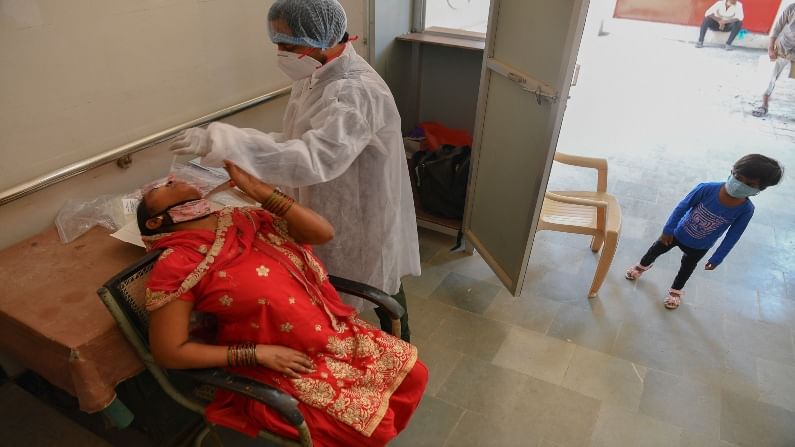One-year of lockdown: COVID–19 disruption and India
While there are certainly better days ahead, there is also a need to recognise that we have paid a huge cost due to the pandemic – a cost which was unavoidable – and one that ensured we save significant lives

Life has come a complete circle as we enter into a familiar territory — that is, states are in the process of imposing mobility restrictions and COVID-19 cases are on the rise. The one big difference however is that this time around there are massive vaccination efforts across most of the world.
In some ways, these efforts have been aided significantly by the efforts of the Indian pharmaceutical and vaccination manufacturing ecosystem. Thus, it has provided India with an opportunity to showcase its capacity for high-skilled manufacturing to the entire world and combine this with its humanitarian considerations which have shaped up our foreign policy over the last many decades.
However, even as the pandemic provided India with an opportunity, it also had an impact on India’s domestic economy. The lockdown imposed earlier in March was an outcome of the then available conventional wisdom which suggested that mobility restrictions would slow the spread of the disease and avoid the healthcare capacity from choking as it did in countries such as Italy and Spain. Thus, several state governments imposed border closures, school closures and other such restrictions which were followed up by a national lockdown. A consequence of a lockdown is a restriction in economic activity for non-essential sectors and that has an impact on the gross value added – or the income earned by people during that particular period. The most impact was on small and medium businesses – particularly those in the contact services industry.
In April, 2020, in a joint paper with Dr Arvind Virmani, we created a framework which was useful for analysing the impact of COVID – 19 on the Indian economy and evaluate its subsequent economic recovery. (The paper can be accessed by clicking here)
Since then, manufacturing sector has recovered significantly, and this recovery has been even across the world. However, services sector has been hit hard – especially contact services. As feared, the prospects of recovery in contact services are prolonged and uneven across countries. The same is true even for India as states that have a lower-case load are able to see modest pick-up in contact services while the states that are imposing fresh restrictions are going to delay the recovery process (& may even force some companies to file for bankruptcies).
India’s overall recovery was robust till about February, however with the recent pick-up in cases and states rushing for a response of mobility restriction points at downside risks to the recovery process. It is therefore important for governments to recognise the costs associated with such restrictions – and their potential to have long-term impact on the growth process.
That contact services sector is struggling is well recognized – and sectors such as tourism, hospitality and restaurants are yet to operate at a capacity which ensures they break even. These sectors employ people across the social hierarchy and thus, there has been a significant impact on nominal incomes due to either wage cuts or cut-back on employment in these sectors. Even though the economy may contract by a little under 7 per cent in the present financial year, the impact of the pandemic will be significant in altering consumption and savings pattern across the economy. Thus, there is a risk of suppressed domestic consumption which can further impact the growth recovery process as people increase their precautionary savings.
India will manage to recover the lost output soon and it will emerge as the fastest growing major economy over the coming two financial years. This growth will be sustained by the series of reforms undertaken by the government which has the potential to improve factor productivity. The high growth years would ensure swift restoration of balance-sheets, be it of corporates, or of households – or even of the government, and this will further help improve the financial constraints & risk aversion that is plaguing our banking system.
While there are certainly better days ahead, there is also a need to recognise that we have paid a huge cost due to the pandemic – a cost which was unavoidable – and one that ensured we save significant lives. But now that we have paid the cost, it is important to work towards accelerating the path to economic recovery. The Budget made a bold attempt at the same, however, a budget can only do so much when states bring in restrictions on operations of businesses.
It is about time state governments realize the serious need to improve their enforcement of public safety norms and allow businesses to operate without restrictions thereby allowing the process of growth recovery (& balance-sheet restoration). Efficient vaccination drives followed by the policy of aggressive testing, contact tracing and isolating is sufficient to ensure we emerge as victorious in the last leg of the pandemic.
India may have lost just 7 per cent (or less) of its economic activity due to the pandemic but managed to preserve substantial lives. Getting the growth process back on track will now be critical to ensure minimum long- or medium-term impact of the pandemic. The onus for the same is now with the state governments. The ball, as they say, is now in their court.